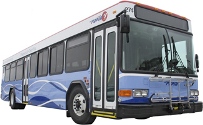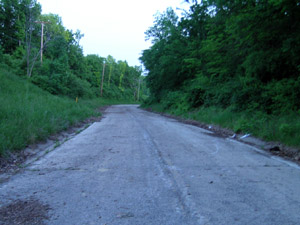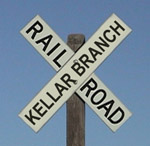The American Association of State Highway and Transportation Officials (AASHTO) recently released a report titled, “America’s Freight Challenge,” that claims freight transportation is going to grow significantly and the nation’s surface transportation system is ill-prepared to handle it. They say this increased congestion of roads, rails, and ports amounts to a tariff on trade:
This congestion increases travel times, it disrupts tightly planned supply chains, and it raises the costs of doing business with America and in America.
The effect of rising congestion is like a tax—only it escalates every year without a vote of the people. This congestion tax can be repealed only if the United States adopts a new vision and new strategy for a global, 21st Century American transportation system.
The report goes on to document the limitations of America’s highways, rail network, and water ports and especially the connections between them (intermodal transportation), show trends in the growth of freight transportation, and make recommendations to take a multi-modal approach to improving the nation’s surface transportation system.
There are many interesting points in the report, but I want to pick out those dealing with freight and passenger rail because there seems to be some anti-rail sentiment around Peoria. I don’t think this sentiment is pervasive, but you do see it occasionally, such as when the Kellar Branch debate comes up or when LaHood says we don’t need passenger rail here in Peoria.
In particular, I found these recommendations interesting (emphasis mine):
Recommendation 1. Meeting America’s surface transportation needs for the future will require a strategy which goes well beyond just “more of the same.†It will require a multi-modal approach, which preserves what has been built to date, improves system performance, and adds substantial capacity in highways, transit, freight rail, intercity passenger rail, and better connections to ports, airports, and border crossings.
Recommendation 6. Establish a National Rail Transportation Policy. Intercity passenger and freight rail are critical components of the nation’s surface transportation system. Current rail capacity is not sufficient to meet passenger or freight needs. It is imperative that a national rail policy be developed which addresses institutional roles, passenger and freight capacity, and new non-Highway Trust Fund funding and financing options.
Better intercity rail means fewer cars on the streets, and more freight rail means fewer trucks on the streets — that all adds up to cost savings on road repairs. The report states, “The expanded rail capacity analyzed by AASHTO would remove 450 million tons of freight and 15 billion truck vehicle miles. That service would save shippers $162 billion and save highway users $238 billion over 20 years and avoid $10 billion in highway repair costs.”
This is why I think rail service needs to be beefed up in this country, not remain status quo. It’s cheaper, cleaner, and more efficient than highways. We’ll always need highways, but we can significantly reduce the size requirements and maintenance costs of them by utilizing rail as much as possible.

 On Tuesday night, the city is probably going to approve a
On Tuesday night, the city is probably going to approve a 

 Despite the fact that Ameren’s webpage boasts “To Our Illinois Customers: We have listened to you and are ready to provide immediate rate relief,” the
Despite the fact that Ameren’s webpage boasts “To Our Illinois Customers: We have listened to you and are ready to provide immediate rate relief,” the  Just a reminder to trail advocates: there is currently no petition pending before the Surface Transportation Board (STB) that would discontinue service on the Kellar Branch. Central Illinois Railroad withdrew that petition months ago and have never refiled. The only petition before the STB at this time is what’s called an “adverse discontinuance,” and the decision that’s handed down will determine whether Pioneer Industrial Railway or
Just a reminder to trail advocates: there is currently no petition pending before the Surface Transportation Board (STB) that would discontinue service on the Kellar Branch. Central Illinois Railroad withdrew that petition months ago and have never refiled. The only petition before the STB at this time is what’s called an “adverse discontinuance,” and the decision that’s handed down will determine whether Pioneer Industrial Railway or